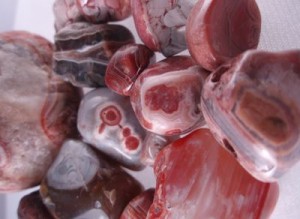I finally got out to search for Petoskey Stones on the beach. I will confess that this particular hunt site is in the Charlevoix area, but I am sworn to secrecy on the exact location.
This was the first weekend that the snow had cleared enough in the woods to get to this area. It is very remote and requires a 4WD to get to it. I went with my best rock-hunting buddy Gary. We had great expectations of finding a good quantity of Petoskey stones as well as high quality Favosites, and were not disappointed.
It actually sprinkled continuously while we were hunting, which made the stones on the beach stand out. The water was smooth so we could also see the rocks in the water. Within a month of ice leaving the area rocks become covered in slime and moss, making it almost unhuntable (my spell check says this is not a word, but I like it anyway), so early spring is the only time to have good hunting in this area. This is a prime example of knowing when to hunt certain areas and when not to. I’m sure, for example, out west you would hunt hard in the cooler weather and not hunt the desert in the summer.
Normally we park our truck at the end of the hunting area and hike the beach back the way we came in. We take a couple empty buckets and dump any buckets we fill next to the trail we came in on, then pick up full buckets as we leave.

Indeed it was a great hunt as anticipated. Gary and I each filled a five-gallon bucket with high quality stones. This took a couple hours. Next time we’ll take our insulated waders so we can check further out in the water for the “big” ones.
As an aside, it is April 22nd as I write this and we had snow again last night. When will the winter end?









